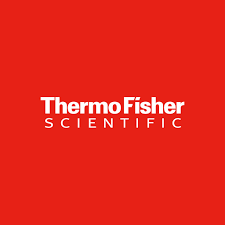Thermo Scientific™ Streptomycin sulphate
Catalog No :
CAS Number :
Brand :
In Stock
Formula: C₂₁H₃₉N₇O₁₂·1.5H₂SO₄
MW: 1457.4 g/mol
CAS Number: 3810-74-0
Specifications:
| Application | Cell culture | ||
| Storage Temperature | 2-8°C | ||
| Product Type | Antibiotic | Forms | Powder |
| Product Brand | Thermo Fisher Scientific™ | ||
| Product Grade | Cell Culture | Formula | C₂₁H₃₉N₇O₁₂·1.5H₂SO₄ |
Streptomycin sulfate is a water-soluble aminoglycoside antibiotic derived from Streptomyces griseus. It is widely used in research and industrial applications due to its bactericidal activity against a broad spectrum of gram-negative and some gram-positive bacteria. Streptomycin inhibits bacterial protein synthesis by binding to the 30S ribosomal subunit, leading to misreading of mRNA and interruption of protein elongation.
Product Specifications:
- Chemical Formula: C₂₁H₃₉N₇O₁₂·1.5H₂SO₄
- Molecular Weight: 1457.4 g/mol
- Appearance: White to off-white powder
- Solubility: Soluble in water
- Loss on Drying: ≤7%
- Sulfate Content (SO₄): 18.0–21.5%
Storage and Stability:
- Storage Temperature: Refrigerator (2–8°C)
- Shelf Life: Ensure storage in a tightly sealed container to prevent moisture absorption. Protect from prolonged exposure to air and light.
Applications:
- Microbiology:
- Selective antibiotic for suppressing bacterial contamination in cell culture.
- Used in selective media for isolating gram-negative bacteria.
- Molecular Biology:
- Prevents bacterial contamination in cell culture experiments.
- Key component in growth media for recombinant protein expression.
- Antimicrobial Research:
- Studies on bacterial protein synthesis inhibition.
- Research on antibiotic resistance mechanisms.
- Veterinary Medicine:
- Historical use for treating bacterial infections in livestock.
- Pharmaceutical:
- Ingredient in the production of pharmaceutical-grade antibiotics.
Mechanism of Action:
- Streptomycin binds to the bacterial 30S ribosomal subunit, disrupting the translation process.
- It causes misreading of the genetic code, leading to production of non-functional or toxic proteins.
- The antibiotic’s bactericidal effect occurs predominantly against actively dividing bacteria.
Key Features:
- Broad-spectrum activity against gram-negative and some gram-positive bacteria.
- High solubility in aqueous solutions for easy preparation.
- Ideal for use in cell culture applications to minimize contamination risks.
Preparation and Use:
- Solution Preparation:
- Dissolve in sterile water to prepare stock solutions.
- Typical working concentration: 50–100 µg/mL in cell culture applications.
- Compatibility:
- Can be used in combination with other antibiotics, such as penicillin or kanamycin, for broader antibacterial coverage.
Safety and Handling:
- Hazard Warnings: Classified as an irritant; may cause respiratory, skin, and eye irritation.
- Precautions:
- Handle with appropriate personal protective equipment (PPE).
- Avoid inhalation, ingestion, and direct skin contact.
- Dispose of in accordance with local regulations for antibiotic waste.
Chemical Identifiers:
- MDL Number: MFCD00037023
- CAS Number: 3810-74-0
Quality Assurance:
- Product quality is ensured through rigorous testing to meet industry standards for sulfate content and moisture levels, ensuring reproducibility in experimental and industrial applications.
- Pack Size: 100g 5g 25g




 0
0
